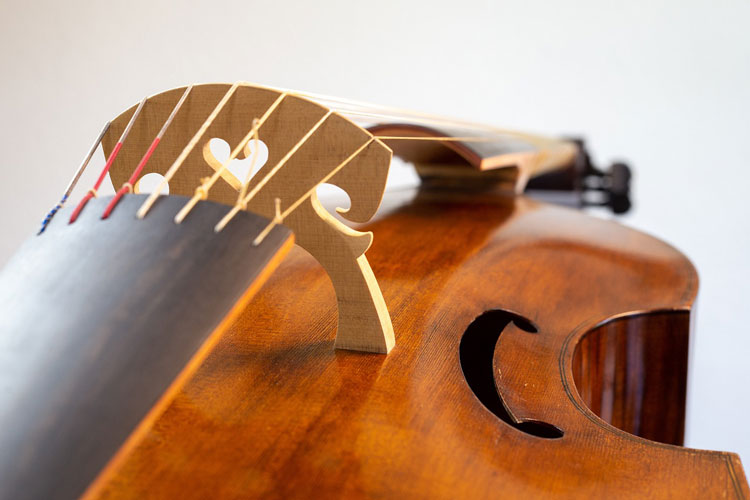The viola da gamba is a string instrument that originated in the Renaissance and Baroque periods. It is a member of the viol family and is played with a bow. The name “viola da gamba” translates to “viola of the leg” in Italian, referring to the instrument’s traditional playing position, held between the legs.
The viola da gamba has a delicate and elegant appearance. It features a slender, curved body made of thin slabs of wood, a flat back, sloped shoulders, and an arched bridge. The instrument is fretted, meaning it has raised strips of material (usually gut) on the fingerboard that divide the strings into specific pitches. This allows for precise intonation and facilitates playing chords.

Violas da gamba come in various sizes and shapes, including treble, tenor, and bass. The bass viola da gamba is the largest and produces the lowest pitch. The number of strings can vary, typically ranging from six to seven, and they are often made of gut or synthetic materials.
In terms of playing technique, the viola da gamba is played with a bow, similar to the violin family of instruments. However, the playing technique differs. The instrument is held between the legs, with the player using a curved bowing motion to produce sound. The viola da gamba has a warm and rich tone, often described as mellow and expressive.
Meanwhile, the repertoire for the viola da gamba is extensive and includes solo works, chamber music, and ensemble music. During the Renaissance and Baroque periods, the instrument was popular in both courtly and domestic settings. It was typically featured in consort music, where multiple viols of different sizes would play together in harmony.
The viola da gamba reached its peak popularity in the 16th and 17th centuries, particularly in England and France. It was favored by royalty and nobility, and many prominent composers, such as Marin Marais and Johann Sebastian Bach, wrote music specifically for the instrument.
After the Baroque period, the popularity of the viola da gamba declined, and it was largely replaced by the violin family of instruments. However, in the 20th century, there was a revival of interest in early music, leading to a resurgence of the viola da gamba. Today, there are dedicated societies and organizations, such as the Viola da Gamba Society of America, that promote the instrument and support its performance and study.
Notable viola da gamba players:
Susanne Heinrich, a renowned viola da gamba player born and raised in southwest Germany.
Hille Perl, a German virtuoso performer of the viola da gamba and lirone. She specializes in solo and ensemble music of the 17th and 18th centuries.
Jordi Savall, a highly acclaimed and influential Spanish viola da gamba player. He is known for his virtuosic performances and extensive contributions to the early music repertoire, as well as his world music collaborations.
Viola da Gamba books
The Viola da Gamba by Bettina Hoffmann (2018)


